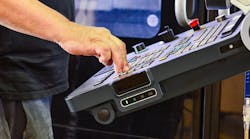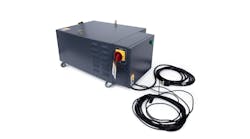Simple adjustments to capital equipment, raw materials used, product design, and technique can make a significant difference in time and money spent on CNC machining. Here are four ways that machine shops and other manufacturers can reduce their CNC machining costs without compromising on product quality or design vision.
1. Choose the right CNC machine. The CNC machine you choose can have a major impact on cost — especially if you plan to purchase the machine for your shop, rather than outsource the actual machining work to a third party.
For example, three-axis CNC milling machines remain popular because they can handle most designs and are typically less expensive than more complex multi-axis machines. They also are easier to program than multi-axis machines, meaning they can cost less in terms of the initial investment and time spent programming the machine for milling.
When machining in-house, you also may find it easier to hire a CNC machine operator who is able to operate three-axis machines than the more complex multi-axis CNC machines — which requires more advanced training and perhaps more experience.
CNC lathes or turning machines can be even cheaper than three-axis machines. However, they won’t provide the same range of functionality as a more complex machine.
2. Reduce design complexity. It’s also essential that your design suits the CNC machines you have available — or that you use the right type of CNC machine for the particular design you will manufacture.
In general, the more complex a design, the more time it will take to machine. Often, minimizing complexity where you can is the best way to cut down on machining costs.
For example, lettering, fine detail with a high aspect ratio, and complex surface finishes can quickly drive up the cost of a product. If a product has threads, limiting the length of those threads — which are often are more difficult to mill — can reduce milling costs.
Unnecessary details, in general, should be considered carefully when prepping a finished design for CNC machining. Eliminating them can save time and money.
Deep internal cavities in a product are also typically discouraged by CNC machinists — these cavities take time and may require specialized, fragile tools that can be damaged during the milling process, as every tool has a limited cutting depth.
3. Design for easier machining. There also are design decisions you can make to reduce machining time.
For example, adding a radius to square inside corners, creating a rounded rather than a sharp corner, can make for a design that is easier to machine. CNC drills are cylindrical, and very fine tools are necessary to create perfect corners. Typically, machinists recommend a corner that’s at least one-third the depth of the cavity in size.
Designing products with thicker walls can help reduce milling time and costs, too. Thicker walls are less likely to vibrate during the milling process, making it easy to mill them safely and accurately.
Time and equipment differences may not be much for individual parts, but as the number of parts you manufacture increases, you’ll see time savings start to have a major impact.
When designing for machining, it’s important not to forget economies of scale. The more parts you plan to manufacture, the more important small differences in efficiency become.
When prototyping or manufacturing small batches, the initial capital required for the design process can easily become more important than efficient design or using the best machine for your particular model. In some cases, it may be a good idea to investigate alternatives to CNC machining for early steps in the design process. For individual prototypes, it may be more cost-effective to use manufacturing techniques like die casting or additive manufacturing.
4. Use easy-to-machine and cost-effective materials. Some materials are much easier to machine than others. In general, the less ductile a metal, the longer it will take to machine. Brass and aluminum alloys are considered more machinable than steel, for example, as they typically take less energy to machine and can be machined in less time.
Cheaper materials can help you drive down machining costs too, especially at scale.
Metals are common machining materials, but they are not always the only option. Plastics, like phenolic and polycarbonate plastic, are also suitable high-performance materials that can be machined with most CNC mills. These materials can be a durable and lightweight alternative to metals.
CNC machining can be expensive but often it’s possible to reduce product costs significantly, with the right adjustments. Designing your products for CNC machining — by reducing straight angle corners, cutting out unnecessary detail, and avoiding deep cavities — can help reduce machining challenges and the time required to complete a given project.
Emily Newton is the Editor-in-Chief of Revolutionized, an online magazine exploring the latest industrial innovations.






